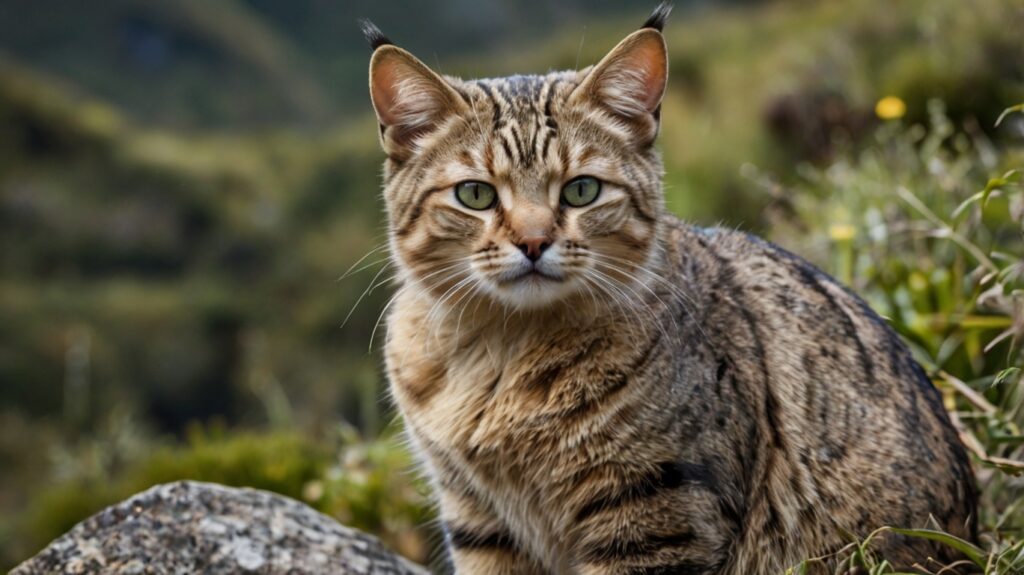Table of Contents
- Introduction
- Physical Characteristics
- Habitat and Distribution
- Behavior and Diet
- Reproduction and Lifespan
- Conservation Status
- Threats to Survival
- Conservation Efforts
- Conclusion
- FAQs
Introduction
The Andean Mountain Cat (Leopardus jacobita) is one of the rarest and least-known wild cats in the world. Native to the high-altitude regions of the Andes, this elusive feline is critically endangered due to habitat loss and hunting. This article explores its physical traits, behavior, habitat, and ongoing conservation efforts to protect this remarkable species.

Physical Characteristics
The Andean Mountain Cat is a small, stocky feline with thick fur adapted to cold mountain climates. Key features include:
- Size: 57–64 cm (22–25 in) in body length, plus a 41–48 cm (16–19 in) tail.
- Weight: 5.5 kg (12 lb) on average.
- Fur: Silvery-gray with dark brown stripes and spots.
- Tail: Bushy with distinct rings, aiding in balance on rocky terrain.
Habitat and Distribution
This species inhabits the Andes Mountains across:
- Countries: Argentina, Bolivia, Chile, and Peru.
- Elevation: 3,000–5,000 meters (9,800–16,400 ft) above sea level.
- Terrain: Rocky, arid slopes with sparse vegetation.
Behavior and Diet
The Andean Mountain Cat is solitary and highly elusive. Its behavior includes:
- Nocturnal Activity: Primarily hunts at night.
- Diet: Feeds on mountain viscachas (a rodent species), birds, and small mammals.
- Territorial: Marks its range with scent to avoid other cats.
Reproduction and Lifespan
Little is known about its reproduction, but studies suggest:
- Mating Season: Likely July–August.
- Gestation: Estimated 2–2.5 months.
- Litter Size: 1–2 kittens.
- Lifespan: Around 10 years in the wild.
Conservation Status
The IUCN classifies the Andean Mountain Cat as Endangered due to:
- Population estimates of fewer than 1,400 mature individuals.
- Declining numbers from habitat destruction and hunting.
Threats to Survival
Major threats include:
- Habitat Loss: Mining and agriculture reduce living spaces.
- Poaching: Killed for fur or in retaliation for livestock predation.
- Climate Change: Alters fragile high-altitude ecosystems.
Conservation Efforts
Several initiatives aim to protect this species:
- Protected Areas: National parks like Sajama (Bolivia) and San Guillermo (Argentina).
- Research Programs: Camera traps and tracking studies.
- Community Involvement: Educating locals on coexistence.
Conclusion
The Andean Mountain Cat is a critically endangered species facing severe threats from human activity. Conservation programs and habitat protection are essential to prevent its extinction. Increased awareness and research can help secure a future for this rare feline.
FAQs
1. How many Andean Mountain Cats are left?
Fewer than 1,400 mature individuals remain in the wild.
2. Where does the Andean Mountain Cat live?
It inhabits the high Andes in Argentina, Bolivia, Chile, and Peru.
3. What does the Andean Mountain Cat eat?
Its primary prey is the mountain viscacha, along with birds and small mammals.
4. Why is the Andean Mountain Cat endangered?
Threats include habitat destruction, hunting, and climate change.
5. How can we help protect the Andean Mountain Cat?
Supporting conservation programs, reducing habitat destruction, and raising awareness can aid its survival.
